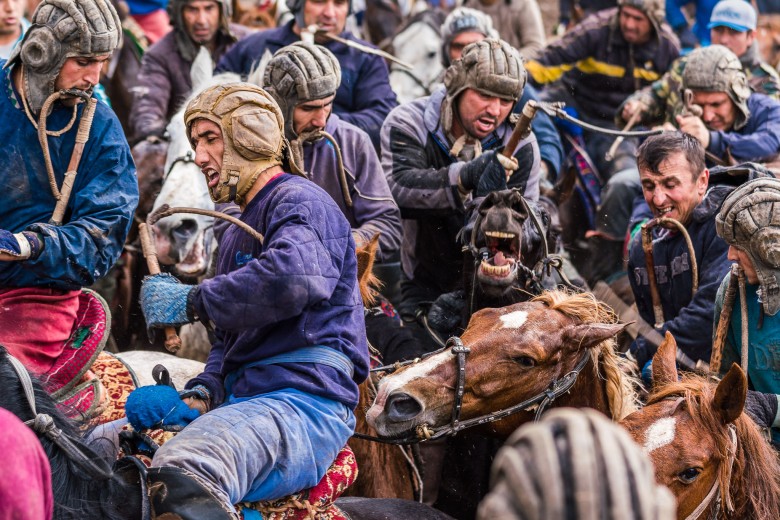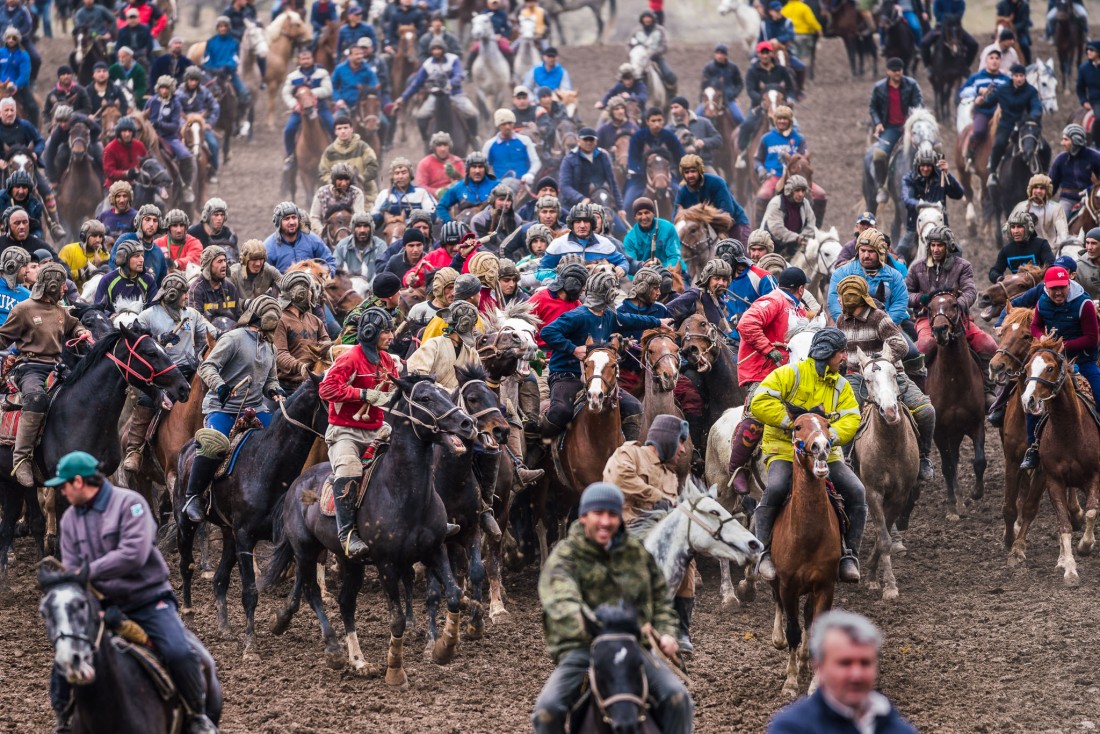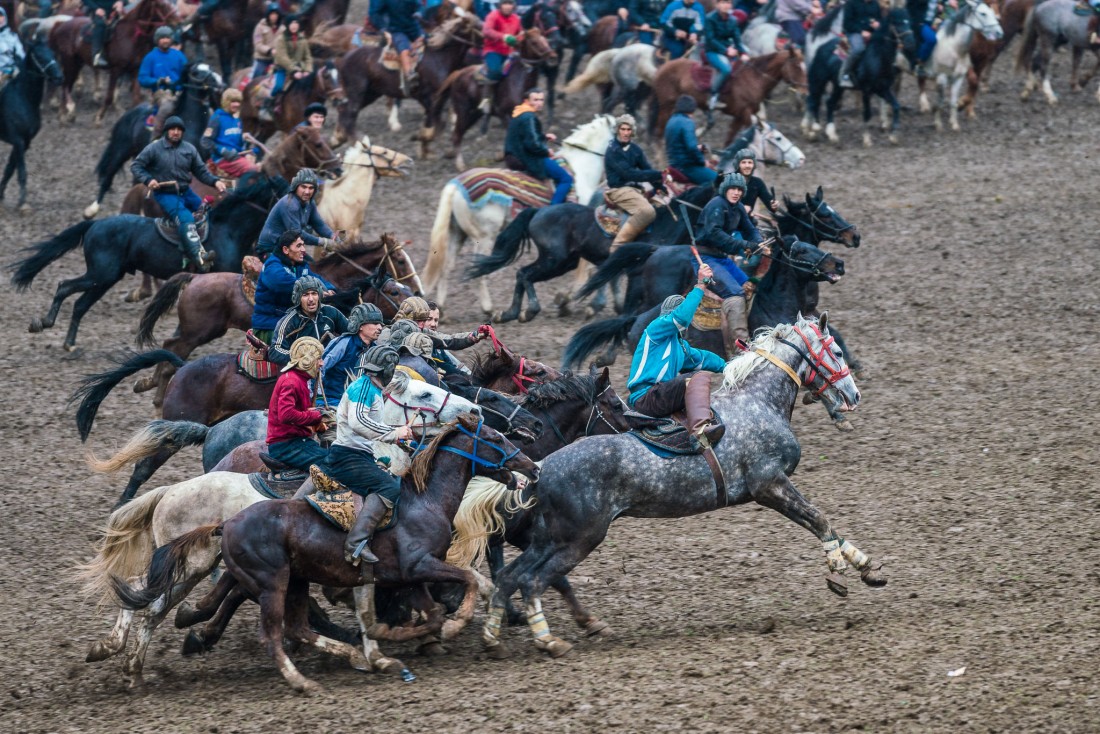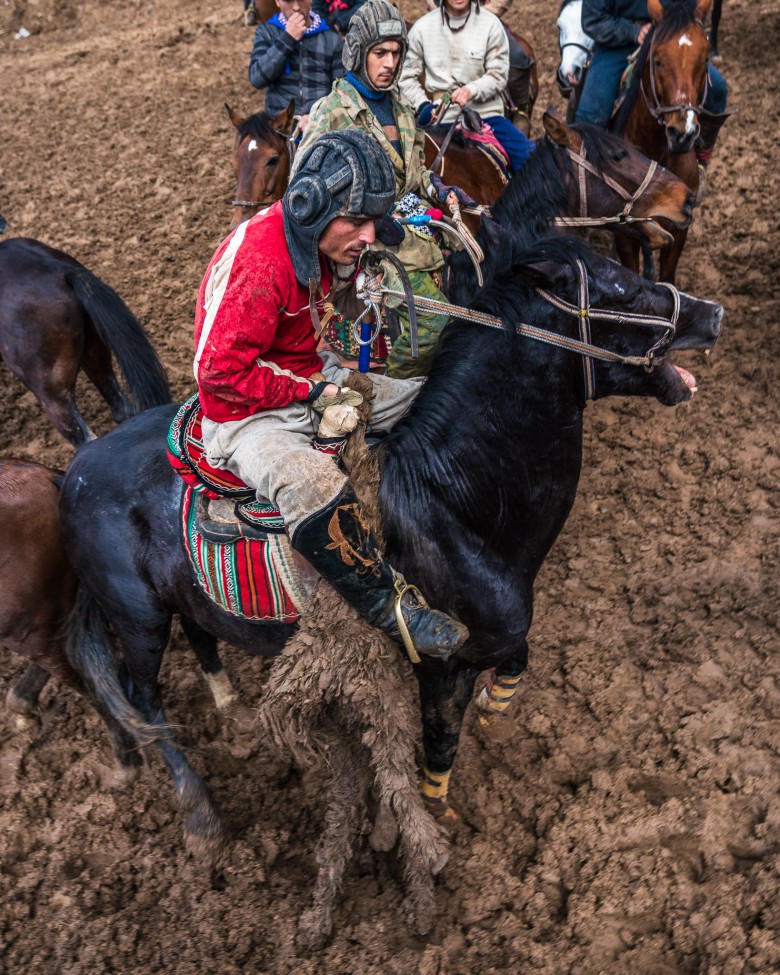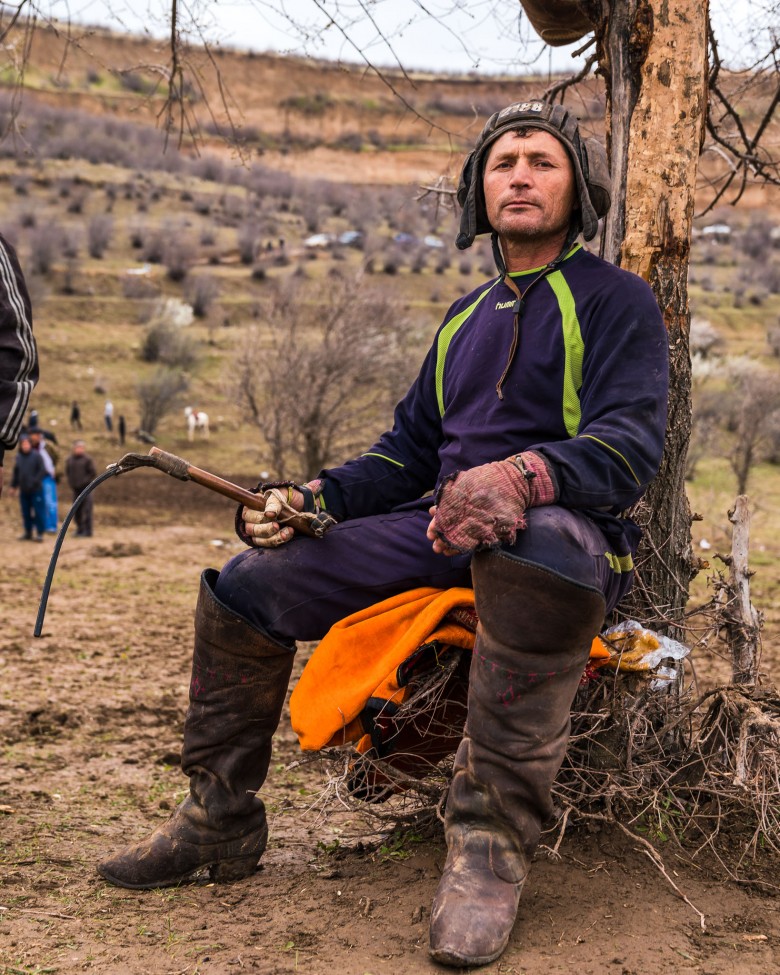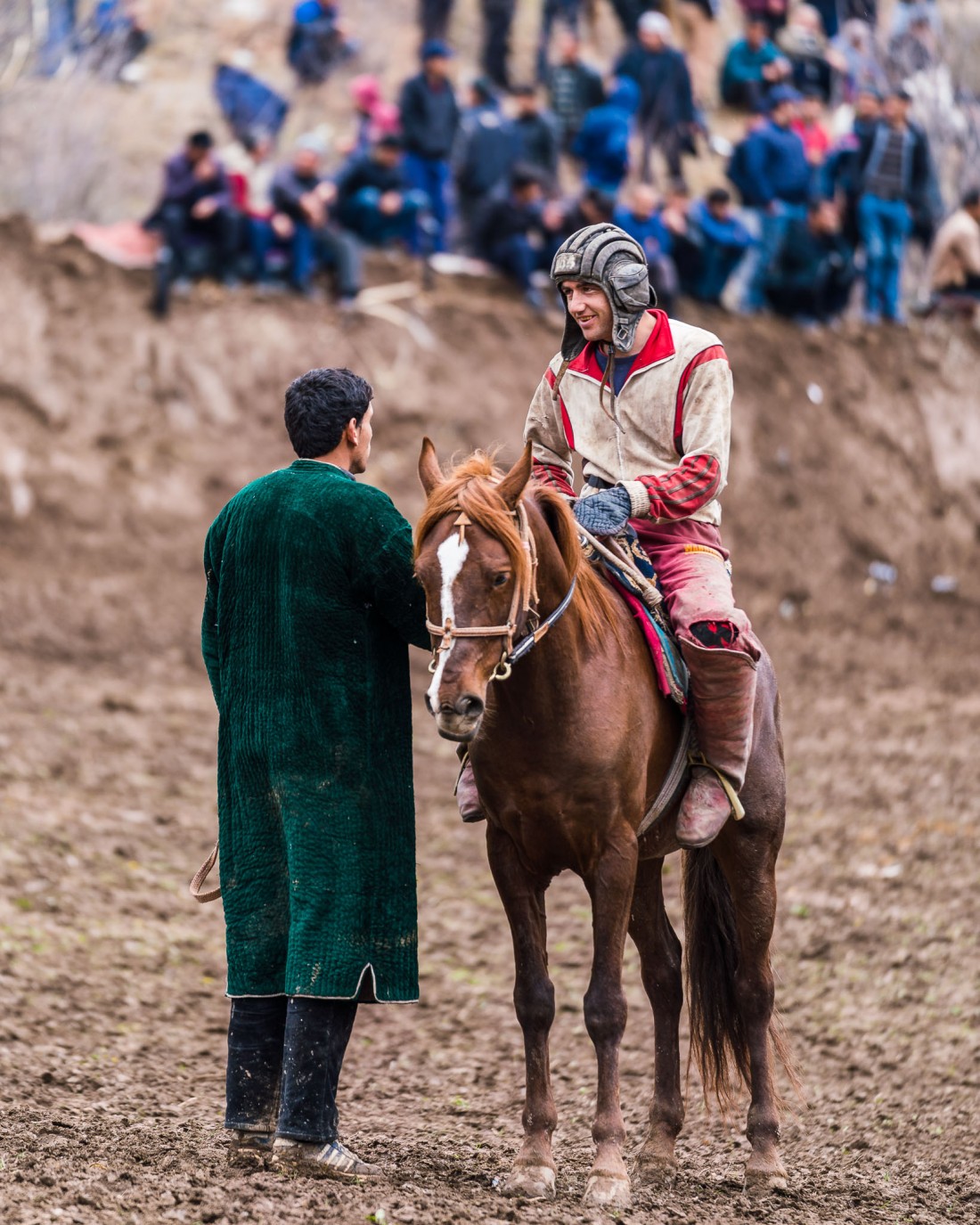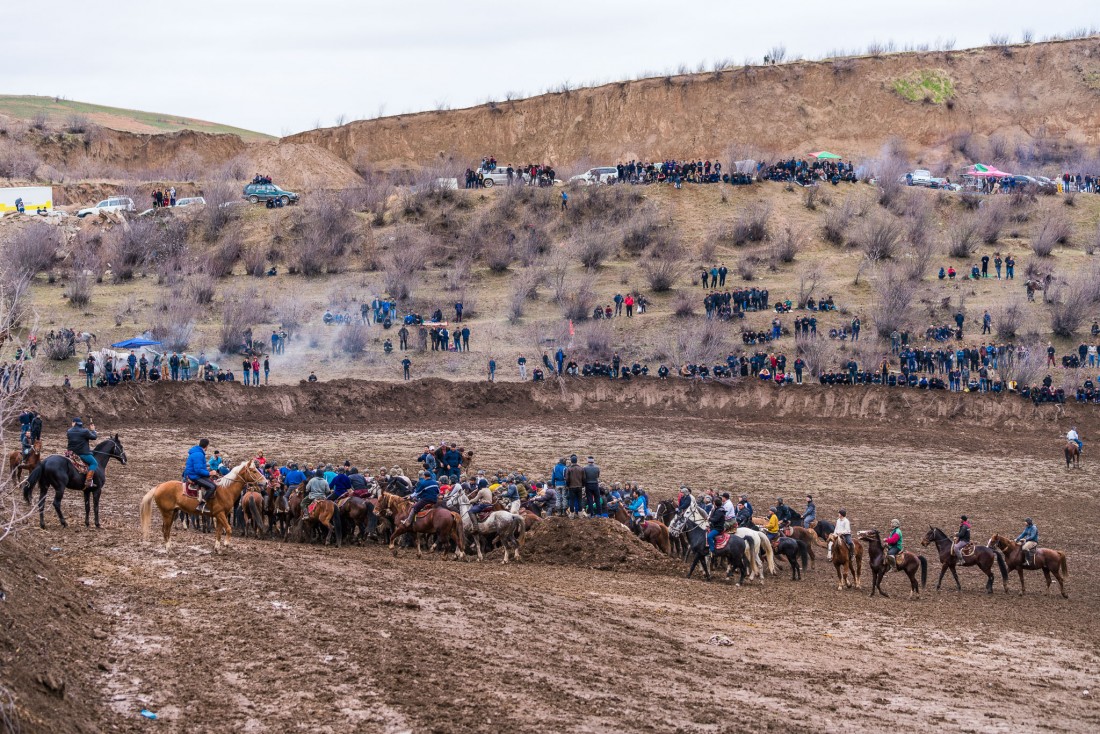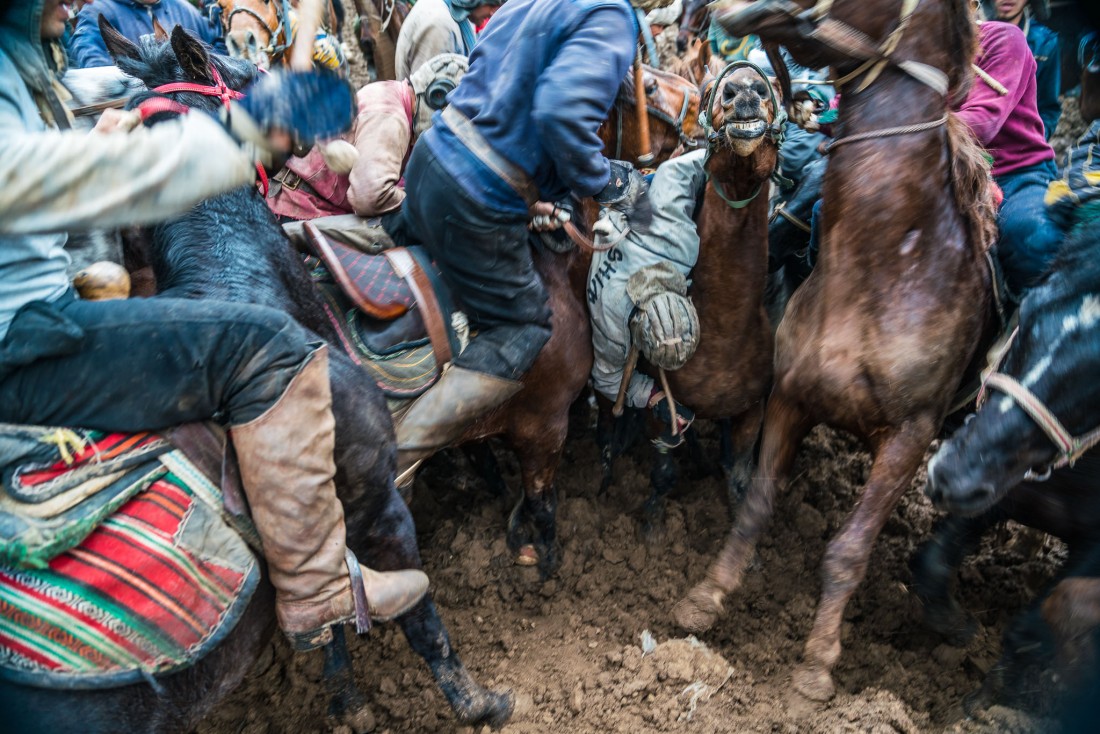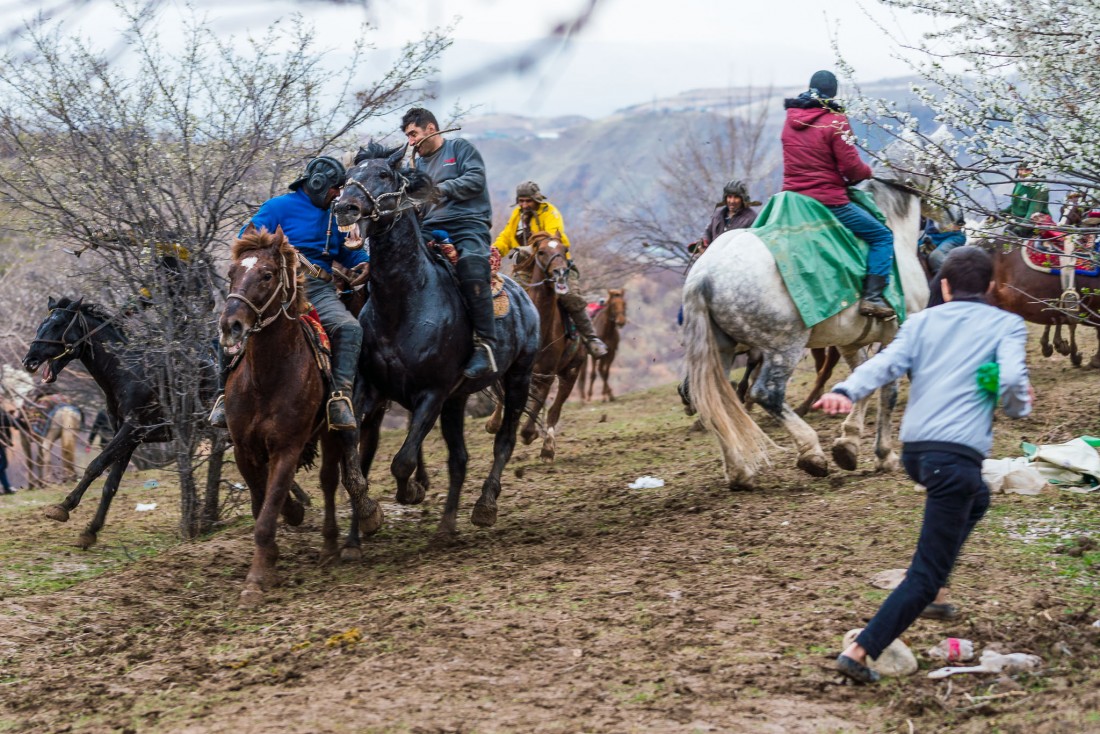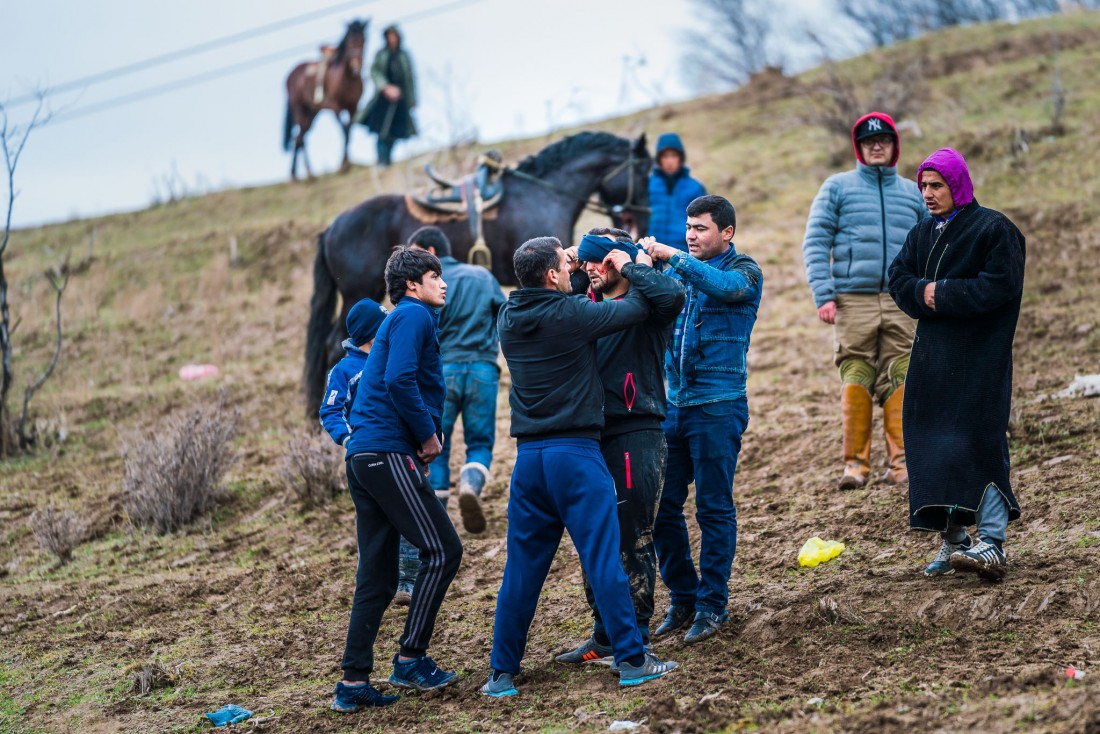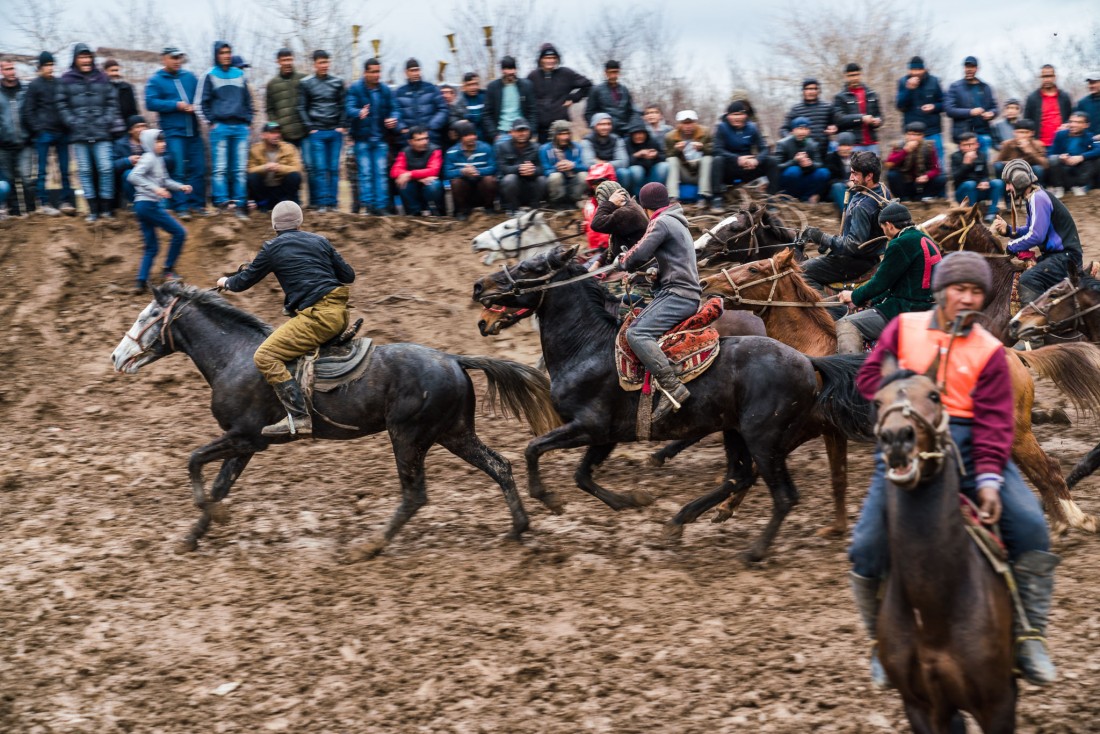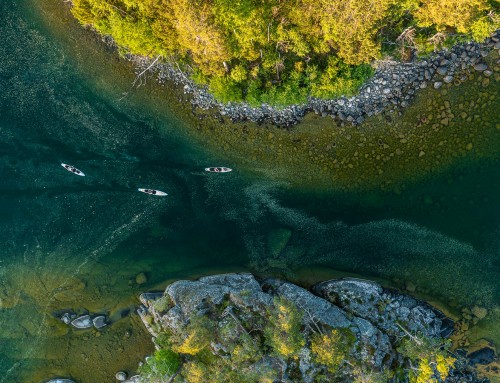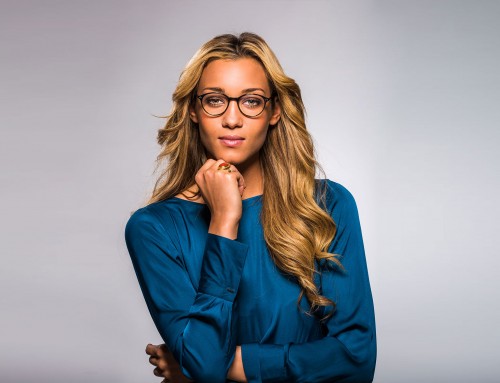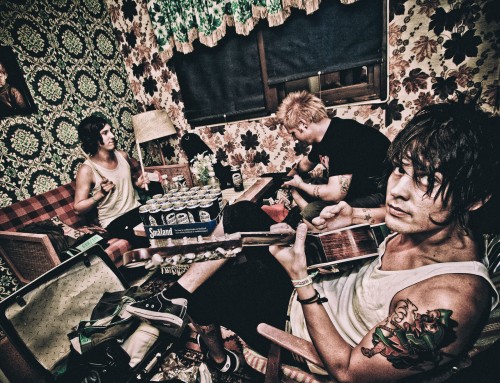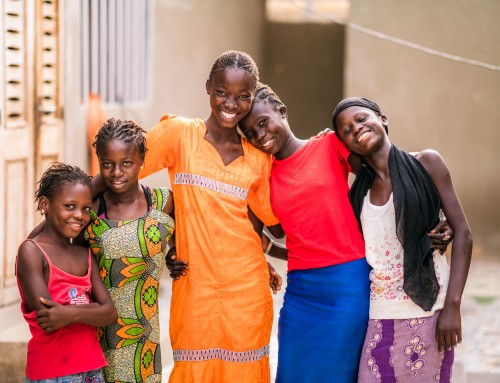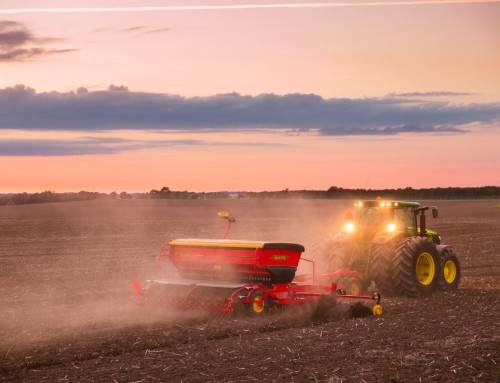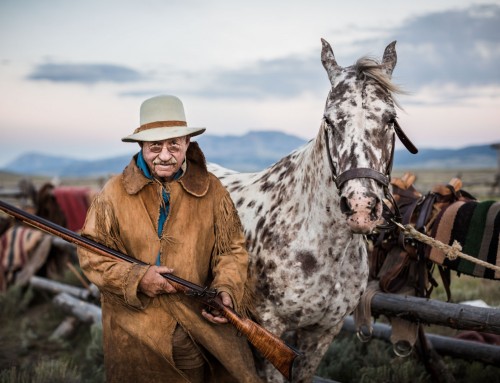Project Description
Photojournalism – Buzkashi
Tajikistan, Central Asia
This is an example of what you as a client will get when hiring me as a
- Photojournalist
- Documentary photographer
- Editorial photographer
- Press photographer
- Press videographer
Typical clients for this kind of job
- Content agencies
- News agencies
- Newspapers & magazines
- Television & broadcast companies
Buzkashi (بزکشی, literally “goat pulling” in Persian) is a Central Asian sport in which horse-mounted players attempt to place a goat, calf or a lamb carcass in a goal.
Played in one form or another for more than 600 years, Central Asia’s national sport, buzkashi, is alarmingly fast and extremely physical. It’s Like the NFL. But with horses and a headless lamb.
The game of Buzkashi seems to have originated in Afghanistan where it is still the country’s national sport. Legend has it that the game was first invented centuries ago when Afghan tribes would gallop up on horseback to steal a rival tribe’s goats from their flock.
Competition is fierce. But the rules state that you are not allowed to whip a fellow rider intentionally or deliberately knocking him off his horse. “Intentionally” and “deliberately” are, however, words that are free for interpretation.
Riders usually wear heavy clothing and head protection to protect themselves against other players’ whips and boots. For example, riders in the former Soviet Union often wear salvaged Soviet tank helmets for protection. The boots usually have high heels that lock into the saddle of the horse to help the rider lean on the side of the horse while trying to pick up the goat.
The game ball in a buzkashi game is normally beheaded and disemboweled goat, calf or a lamb that has 2 limbs cut off. It is then soaked in cold water for 24 hours before play to toughen it. Occasionally sand is packed into the carcass to give it extra weight. While players may not strap the calf to their bodies or saddles, it is acceptable – and common practice – to wedge the calf under one leg in order to free up the hands.
A buzkashi player is called a Chapandaz; it is mainly believed in Afghanistan that a skillful Chapandaz is usually in his forties. This is based on the fact that the nature of the game requires its player to undergo severe physical practice and observation. Similarly, horses used in buzkashi also undergo severe training and due attention.
A player does not necessarily own the horse. Horses are usually owned by landlords and highly rich people wealthy enough to look after and provide for training facilities for such horses. However, a master Chapandaz can choose to select any horse and the owner of the horse usually wants his horse to be ridden by a master Chapandaz as a winning horse also brings pride to the owner.
In Tajikistan, buzkashi is played in a variety of ways. The most common iteration is a free-form game, often played in a mountain valley or other natural arena, in which each player competes individually to seize the buz (goat, calf or lamb) and carry it to a goal. Forming unofficial teams or alliances does occur, but is discouraged in favor of individual play.
Often, dozens of riders will compete against one another simultaneously, making the scrum to retrieve a fallen game ball (goat, calf or lamb) a chaotic affair. Tajik buzkashi games typically consist of many short matches, with a prize being awarded to each player who successfully scores a point.
Similar games are known as kokpar, kupkari and ulak tartysh, in Kyrgyzstan and Kazakhstan and as kökbörü and gökbörü in Turkey, where it is played mainly by communities originally from Central Asia.
Extended game plan occurs every now and then. As an audience, you better be quick on your feet or you will get run over.
The players are not the only ones who undergo arduous training; the horses that participate in buzkashi must train for five years before ever making it to the playing field. Buzkashi is indeed a dangerous sport, but intensive training and excellent communication between the horse and rider can help minimize the risk of injury.
[/fusion_text]
Definitions
Photojournalism
First, photojournalism, which is primarily about recording an event, and telling a viewer what happened via a series of pictures. Typically found in newspapers and magazines, photojournalism is highly objective, and while some images can be very beautiful, there is little scope for direction or altering lighting conditions.
Documentary photography
Documentary photography is very close to photojournalism in that it is about recording an event or telling a viewer about something through a series of pictures. However, documentary photography needn’t be as objective as photojournalism, and the documentary photographer has more freedom to direct subjects, change the scene, modify the light, etc.
Editorial photography
Editorial photography is about shooting for newspapers or magazines, but is not photojournalism. Typically an editorial photographer will be producing portraits, or documenting a workplace or an event of some kind for a feature in a magazine. The photographer does not need to be objective like a photojournalist, but needs to meet the brief, which is often to produce polished images that border on being commercial.
Commercial photography
That brings me nicely onto the subject of commercial photography, a genre that is easily summed up as being one that serves commercial clients. A commercial photographer might do corporate portraits, products, or a documentary about new offices or a corporate rebranding.
There are some overlaps where documentary photography can be classed as commercial or editorial, etc. However, the above explanations should help when trying to broadly distinguish between photojournalism, documentary, editorial, and commercial photography.
I class myself as a documentary photographer because I regularly change things around, direct portraits, modify the light, and am happy to work on editorial or commercial assignments.
